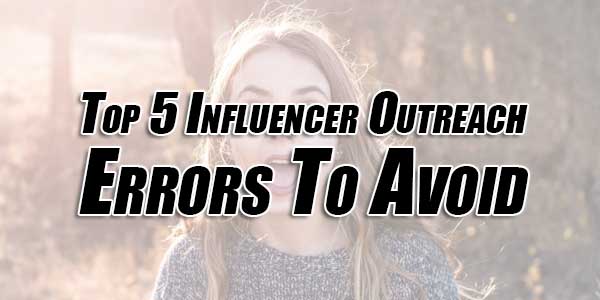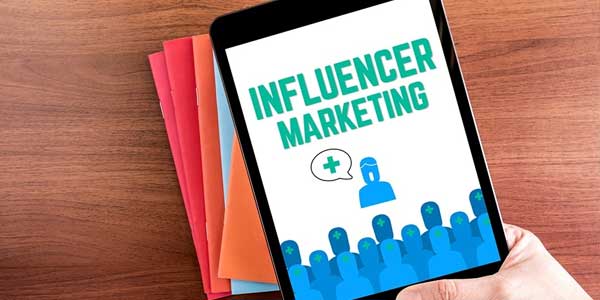
In modern marketing, everything is digital. Strategies for getting a company’s name, products or services out there are overwhelmingly founded in the online world, looking to use the vast range of new tools that are generated and improved every day as the internet evolves and advances. Amongst all of the incredibly useful, simple and cost-effective methods that have arisen, the use of social media has had a profound impact on what is achievable for companies of all different shapes and sizes. From building a hashtag to paid promotions, there’s so much to explore and so much potential for success.
One corner of the social media marketing that has drawn particularly large amounts of attention is the use of influencers to help spur on brand marketing. Influencers are social media uses who, through whatever route, have achieved a significant following of their own. Each post that they make is seen by, hundreds, thousands or even millions of people. Marketing teams quickly identified how incredibly helpful this could be if it could be harnessed to draw attention to a company. So, influencers are people who are paid by companies to ‘influence’ their followers into visiting sites, purchasing products/services and otherwise thinking highly of a company.
Sounds great, you might say. And indeed it is great, or at least it can be. Unfortunately, in such a public realm with so much at stake, it can be easy to get things wrong. Let’s take a look at 5 influencer outreach errors you can avoid.
Table of Contents
1.) Asking The Wrong Influencer:
This is one of the most easily made mistakes and is, unfortunately, one which can completely undo your campaign if you make it. Influencers are just people, they themselves are not marketing units. So a lot of the work that a marketing or advertising firm would do on your behalf were you to engage their services, won’t be done by an influencer. You pay them to post once every 5 days on Instagram about your product, that’s all they will do. They won’t advise you, for example, that your specific brand doesn’t fit with their audience, that you may actually damage your reputation, that volume of followers is rarely ever a substitution for quality of followers. Choose the wrong influencer and you could find yourself paying for an anti-marketing campaign, where the influencer you have chosen simply doesn’t align with your brand and makes their followers wonder what on earth is going on. You have to do the necessary research on all of your potential candidates and use actual analysis to ensure that the influencer you choose will do as much as possible for your brand.
2.) Choosing The Wrong Contact Method:
This is another issue that would be avoided with some research into the sort of person your influencer is, the sort of companies that they have worked with in the past and more. For example, contacting through social media will be right for some people and totally wrong for others. A page that has recently found a real audience and is generating very organic content can probably be ‘direct messaged’ with a proposal, or at least with a request for further discussion. But do the same thing with a big influencer who has worked with a dozen companies already and is signed to an agency, and you could lose them instantly. In those instances, it’s best to be sending official emails, with detailed strategy documents with expectations and payment specifics. If they have an agent you shouldn’t circumvent them as that could lead to you losing them for good.

3.) Blanket Contract:
To continue on from the point above, another one of the worst possible things for you to do is to simply look up a list of the most followed people in whatever niche you operate in and then putting them all on a single BCC email, or copy and pasting a generic Tweet, Instagram DM, Facebook message or whatever it might be and contacting them like that. Again, influencers are real people, they themselves are not companies. You want to build a relationship with them, not instantly make them feel as if you don’t value them as anything other than a tool, a means to an end. You need to tailor your contact, writing in a way that demonstrates a real level of intimate knowledge about their personal brand and their following. This will help go a long way to ensuring that you have the solid foundations you need to begin a fruitful partnership.
4.) Keeping Them In The Dark:
Whilst, as mentioned, influencers are just individuals, not marketing professionals or advertising companies, that doesn’t mean that you want to keep them completely uninformed. The first reason is simply that it could be considered impolite of you, linking back to that issue of not simply viewing an influencer as a means to an end. You need to communicate clearly and openly with them, not just forward them what to post and leaving it at that. The second reason is that they could be even more helpful to you and your campaign if they know what your objectives are. They may not be advertising pros, but they know their audience, their personal content and their platform better than you. Tell them what you hope for and work with them as a team.
5.) Failing To Follow Up:
This is an easy one. Not to harp on about it too much but, influencers aren’t necessarily business people. They could be artists or models or singers or dancers, all busy with their lives. If you don’t receive a response straight away that isn’t a definite no. It could be an ‘Oh, I completely forgot to reply!’ or an ‘I’ll put this on ice until my current influencing contract is finished’. Keep in touch and keep reminding them to respond!
Conclusion:
Overall, there are quite a few ways that you can mess up your initial outreach with influencers. As I think is evident, a lot of the problem relates to the fact that influencers are neither marketing professionals nor true laymen, so striking the balance between talking business and keeping it casual requires research and delicacy.

 About the Author:
About the Author:
















Be the first to write a comment.